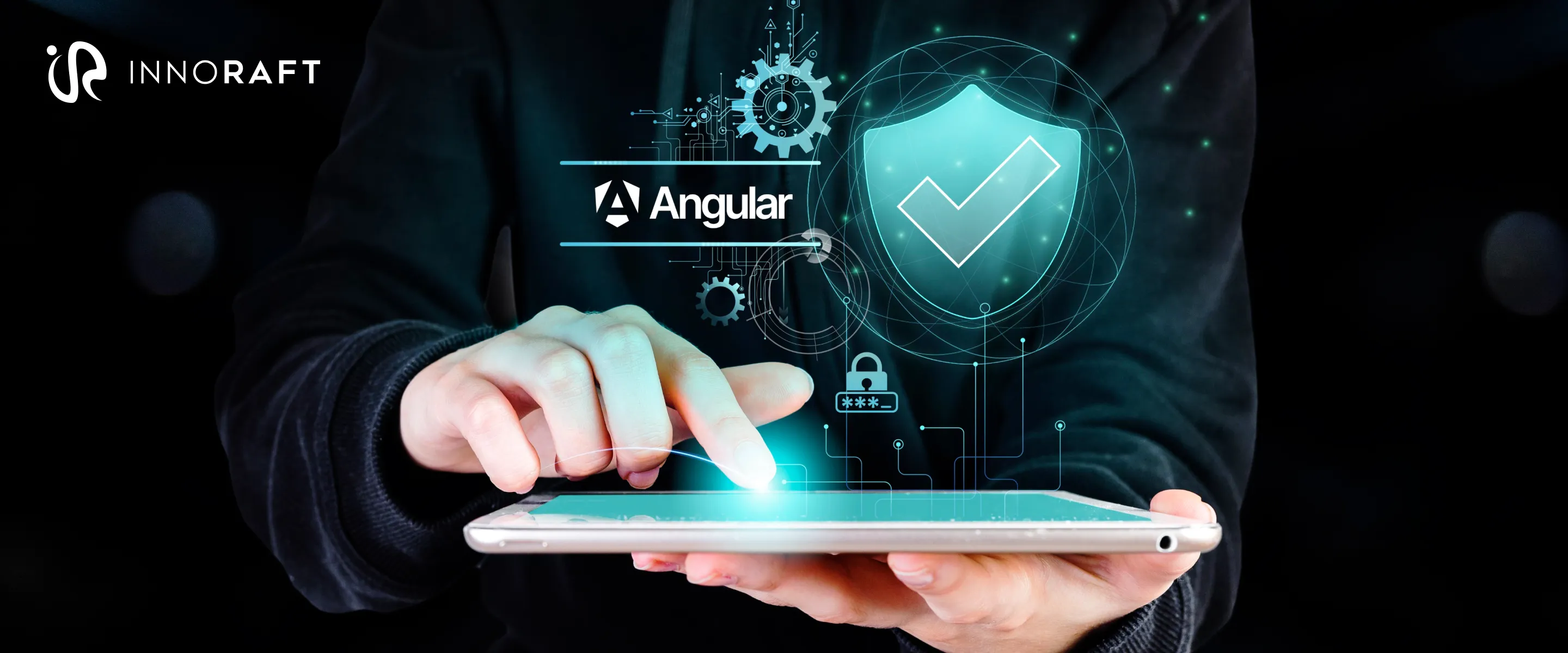In a world that is more connected than ever before digitally, it is vital to secure Angular applications. A vulnerability can affect application performance, user trust, and brand image and even expose our users' private data. There are two critical pillars of web application security in Angular: authentication and authorization.
With Angular becoming increasingly well-known in contemporary web development, understanding how to utilize the security features of this framework will be essential. Proactive treatment of frontend security in Angular will ensure that any weaknesses that develop through widespread attacks can be addressed while also striving to achieve an application that is both secure and user-friendly.
What is Authentication?
When a sensitive resource is accessed by a user or system, authentication verifies their identity. When Angular login authentication is used, users often submit login information like their username and password, which is checked to authenticate their identity. Implementing strong frontend security in Angular begins with secure and efficient authentication mechanisms.

Types of Authentication Mechanisms
Here are some common approaches developers use to secure Angular apps:
Token-based authentication (Angular JWT Authentication)
Token-based authentication is typically employed in contemporary web applications. In Angular JWT authentication, after a successful login, the server produces a JSON Web Token (JWT) that the client includes in later requests to call protected APIs. This stateless technique improves scalability and is best suited for Angular secure routing.
Session-Based Authentication
When a user successfully signs in, this method generates a server session. The session ID is kept in a cookie, which the server checks with each request. While less common in SPAs, it remains helpful in some business use cases where session management is critical.
Social Authentication (OAuth, OpenID Connect)
Users can sign in using their social media accounts (such as Google or Facebook) by using Angular developers' OAuth2 implementation. These protocols enhance user satisfaction, provide robust web application security in Angular, and delegate identity verification to trusted third-party providers.
What is Authorization?
After a user has been authenticated, authorization is the subsequent process that establishes what they can do in your application. Based on their roles and permissions, authorization determines which actions and resources are accessible to particular users. It confirms that users can only do or see what they are allowed to do.

This is particularly crucial for web application security in Angular. Even authenticated users may access sensitive data or execute unpermitted actions.
Role-based Authorization in Angular
Role-based authorization in Angular is an effective method of managing access. It entails establishing an organized structure in which people are allocated specific roles and granted specified rights.
Determine Roles and Permissions
Begin by establishing roles such as admin, editor, or viewer, and then assigning those roles to particular rights like read, write, or delete. This not only improves the security of your app but also makes it easier to manage and scale. It is a key component of ensuring frontend security in Angular.
Utilizing Angular Authentication Guard for Secure Routing
To implement these roles in real time, utilize Angular authentication guards. These guards serve as checkpoints along your app's routes. With Angular secure routing, you can prevent unauthorized users from discovering sites they should not view. For instance, a route to the admin dashboard would only appear if the user has the admin role.
Combining smart role definitions with adequate route protection provides a solid basis for securing Angular applications, ensuring your app is protected, smart, and user-specific.
Best Practices for Authorization and Authentication in Angular
Securing Angular applications requires a proactive approach to safeguard user data and essential business logic. Here are some best practices that implement modern security strategies utilizing important Angular features:
Proper Storage of Sensitive Data
Where and how to store sensitive data, such as tokens, passwords, or user information, is one of the most common issues with Angular Login Authentication or Angular JWT Authentication. Despite its convenience, localStorage is susceptible to Cross-Site Scripting (XSS) attacks and can only be accessed through JavaScript. Use HTTP-only cookies whenever you can. Ensure the client-side is encrypted if you must store sensitive data there. Use strategies like silent re-authentication or refresh tokens to manage JWT expiration.
Applying Two-Factor Authentication (2FA)
To make an Angular web application secure, use TOTP (Time-Based One-Time Passwords) or authentication tools like Google Authenticator. Use libraries like ngx-auth-firebaseui for Firebase-based 2FA or integrate services like Auth0 for a more seamless implementation. Two-factor authentication is a crucial upgrade when adopting Angular Secure Routing and securing admin-level access.
Regularly Reviewing Security Measures
Securing Angular applications is not a one-time task. As threats shift, so should your security posture. To identify weaknesses in third-party Angular packages, use tools like npm audit. Outdated Angular versions may lack fixes for known security flaws. Ensure timely upgrades. Verify that user roles and access levels remain appropriate as your app evolves. Periodically test guards like CanActivate, CanLoad, and CanActivateChild to ensure routes are adequately secured.
Conclusion
Authentication and authorization are the building blocks of Angular application security. Angular Login Authentication, Angular JWT Authentication, and Role-based Authorization in Angular can be utilized by developers to develop consistent, scalable, and secure applications. Authorized users are the only ones who can access the corresponding resources due to practices such as Angular Secure Routing, Angular Authentication Guard, and Angular OAuth2 Implementation.
Learning these core concepts is crucial for maintaining strong web application security in Angular and enhancing frontend security. Follow best practices, stay alert for threats, and periodically review your authorization and authentication procedures to ensure the protection of the applications and users. As an enterprise software development firm, Innoraft brings proven expertise in building secure, scalable, and user-friendly solutions—partner with us to elevate your digital infrastructure.


